#the carthaginians
Note
In regards to your woes of everyone being named Marcellius. I just read "The Carthaginians" by Dexter Hoyos, and if you thought the Romans were bad for reusing names, then hoo boy the Carthaginians were even worse. All Carthaginian aristocrats had one of these names, Hannibal, Hasdrubal, Himilco, Gisco, Bomilcar, Hanno, Bostar, Adherbal, Mago, and Maharbal. And if they didn't have last names, and if they had cognomen, they were rarely recorded. There are only two noble Carthaginian families that can definitely be identified, and thats the Magonids, and the Barcids, And with the Magonids, that wasn't even their cognomen. We just know that the descendants of a certain Mago held power for a century and a half, so all the major Carthaginians we hear about in this area are Probably Magonids, unless stated otherwise.
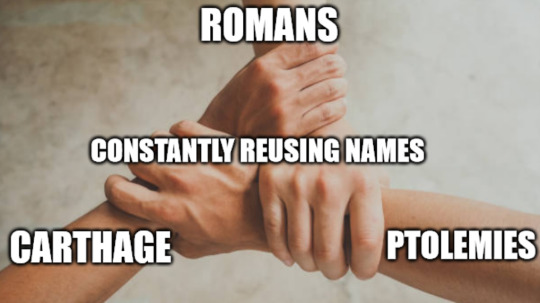
I'm never teasing my mom for naming dogs after food items and onomatopoeia again.
#the great onomastics clusterfuck#jedistemple#just roman asks#just roman memes#carthage#names#dexter hoyos#the carthaginians
49 notes
·
View notes
Text
Does anyone have any articles about indigenous Sicilian Mythology they can recommend? Because I’m tired of trying to find anything on Sicilian Myths and finding everything Greek. I want to know about my ancestors from before the Greeks.
I can’t escape the feeling that Sicilians have never really belonged to themselves. We were Greek and Phoenician and Roman and Carthaginian and Mycenaean and All other things, not necessarily in that order.
I don’t know what to say. I don’t mean to be a downer, but we never belonged to ourselves. Being under the control of the Italians is just the latest in a long run of conquerors and colonists. They call and treat us the way the English treat the Welsh.
Im just really ———— upset and I want to learn more about my heritage from before the Greeks, from before anyone took over us. If anyone has anything or can recommend anything, lemme know by reblogs.
#sicilian#sad#A Sicilian version of Hiraeth would be great right now#sicilian ancestry#sicilia#the Greeks#the Italians#not really a rant but sort of#Phoenician#Romans#Romans enslaved us and brought slaves to Sicily#the Carthaginians#The Sikeloi and Sicani and the Elymians traded with the Mycenaeans#and the Minoans#and the Phoenicians#and the Greeks#before the Greeks took over the Eastern part of the island#and founded cities like Syracuse#the oldest city is#Messina#(on the island)#and I think it was Phoenician#Or Greek#we weren’t given time to develop as a society#before the island was taken over#I feel really sad and sort of sick#I’m sick of Northern Italians saying things like#‘Sicilians are criminals’ ‘Sicilians are lazy’ ‘Sicilians are dirty’ and then Sicilians go and say that and believe in and internalize it#this feels awful and I can’t talk about this in English without it becoming about babbi Miricani identity politics#please help
2 notes
·
View notes
Text

Dido Dido Dido
#The guy in the back in Hannibal 💕#I can’t tag him bc of yknow#Drawing things from the Aeneid is revision actually#I’m obsessed with Dido cursing all the Carthaginians#It’s so so good#dido#dido of carthage#the aeneid#the Aeneid art#Fanart#mythology art#my art#roman mythology#Also I do not know what Hannibal looks like and I didn’t look it up#Take him with a grain of salt#Vergil#Dido
712 notes
·
View notes
Text

Hannibal Crossing the Alps by Francisco Goya
#hannibal barca#hannibal#alps#italy#art#francisco goya#antiquity#carthaginian#carthaginians#carthage#punic wars#second punic war#rome#ancient rome#ancient carthage#roman#romans#history#europe#european#mediterranean#cisalpine gaul#roman republic
93 notes
·
View notes
Text

The book. 2022 acrylic on canvas michael pontieri 55x34cm
#lucia#acrylic on canvas#nocturne#two moons#reading#il libro#the book#carthaginian ship#adirondack chair#stars
937 notes
·
View notes
Text
The Great Mother
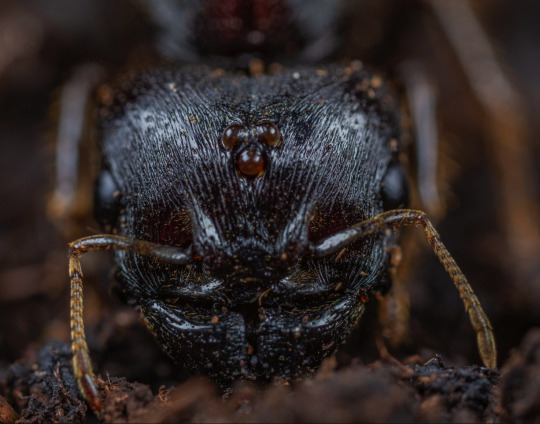
"... Mother was always this larger than life figure in our lives, it was hard to imagine that someone so powerful, so constant, could need our help..."
This is a Carebara diversa queen looking at one of her minor workers. Once their nest is established the queen relies on them to feed her and keep her safe. When the colony reaches a large enough size majors with similar proportions to the queen will be born.
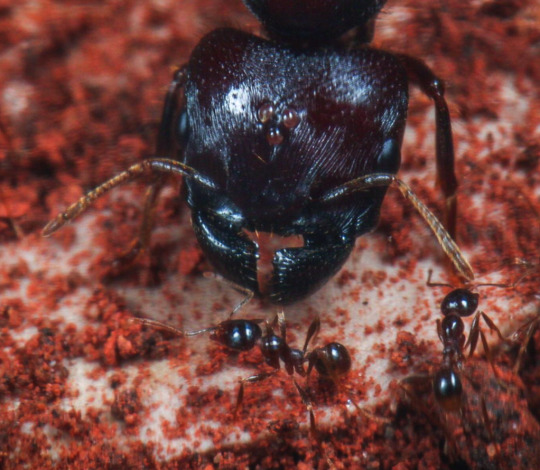
It's interesting to me that the queen has such stubby antennae. (the majors do too) It makes me wonder if ant communication is better when the antennae are of a similar scale.
Short antennae can also be an adaptation to make fighting less risky. But a queen like this would avoid fighting. (majors are another story. They are called "marauder ants" because the minors ride on the majors backs, like a troop of Carthaginian soldiers on the back of an elephant. )
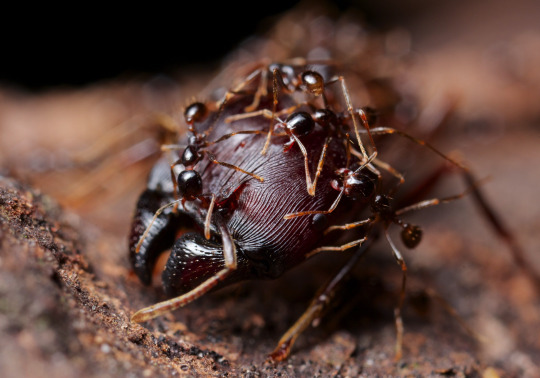
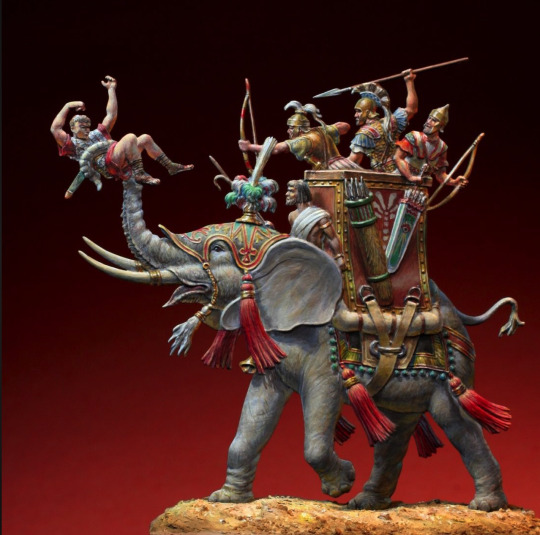
(Photo source)
#ants#antposting#bugblr#ant#myrmecology#antblr#antkeeping#invertebrates#insects#bugs#Carthaginian soldiers#Carebara diversa#war elephant
35 notes
·
View notes
Text
It isn’t as famous as that of the Greeks and Romans, but the Carthage religion is just as fascinating. Its pantheon of gods evolved and grew with the Carthage Empire.
26 notes
·
View notes
Text
Phoenician and Hebrew were both dialects of the Canaanite language and so they were mutually intelligible. Even Punic, the language of Carthage, which was a Phoenician colony, at its height in the 3rd century BCE would still be similar enough to Hebrew to allow for communication. This means that Hannibal Barca, the Carthaginian general that crossed the Alps with his elephants and attacked Rome could, if given an opportunity, read the Hebrew Bible in the original, although with some difficulty.
26 notes
·
View notes
Text
May I steal you 5 minutes?

#hehehee funny I live in Cartagena (The carthaginians guys exactly)#do you guys like my excuse to make him spaniard?#I could also go on how Lune sounds like Luna but Lune is an already existing word#(I’m devastated/j)
35 notes
·
View notes
Text

Five Rare 2,300-Year-Old Gold Coins Discovered in Ancient Carthage
Researchers made the discovery during excavation works in the North African nation of Tunisia, in an area that once formed part of the territory of ancient Carthage, the country's Ministry of Cultural Affairs has announced in a statement.
Carthage was a great city of antiquity founded by the Phoenicians on the north coast of Tunisia in the first millennium B.C. The city became a thriving port and trading center, eventually developing into a significant power in the Mediterranean. Carthage became a major rival to Rome, which eventually conquered and destroyed the city in 146 B.C.
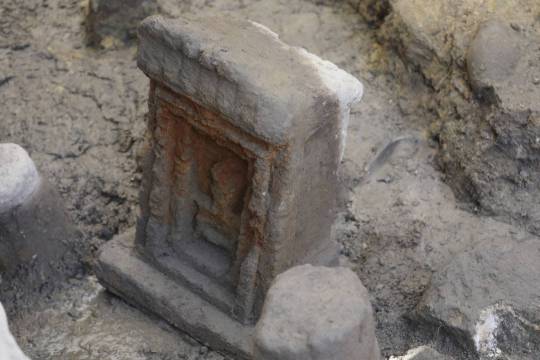

The archaeological site of ancient Carthage-added to UNESCO's World Heritage List in 1979-lies in what is now a residential suburb of modern Tunisia's capital Tunis.
Carthage had a sacred site known as a "tophet," which served as a burial ground, particularly for young children.
Thousands of urns containing the ashes of young children have previously been found at the site, which was originally dedicated to the deities Baal Hammon and Tanit.
It is here that archaeologists found the five gold coins dating back to the 3rd century B.C. in August, as well as several urns with the remains of animals, infants and premature babies.
The gold coins reflect "the richness of that historical period and [affirm] the value of the civilization of Carthage," the ministry said in a statement.

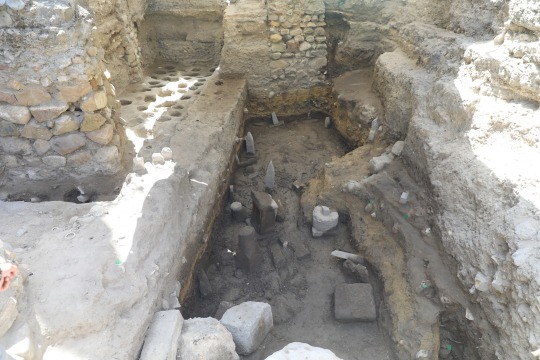
The rare gold coins measure around an inch across and have designs showing the face of Tanit-a symbol of motherhood, fertility and growth for the Carthaginians.
Archaeologists believe that the coins were left as offerings to Baal Hammon and Tanit by wealthy worshippers.
Tophets have been found at other Carthaginian sites, which were traditionally thought to house the victims of child sacrifice. Ancient Roman, Hellenistic and biblical sources attest to this, and some modern scholars agree.
However, the topic is controversial, with other experts arguing that tophets were simply children's cemeteries for individuals who died naturally, or that not all the burials were sacrifices.

The latest finds are not the only recent discovery of ancient coins. Earlier in August, a metal detectorist found two gold coins from different historical eras on the same day in a field in England.
In July, archaeologists uncovered several 500-year-old gold coins during excavations at the ruins of a medieval monastery in Germany.
Also in July, the Israel Antiquities Authority announced that a rare silver coin dated to the time of the First Jewish Revolt against the Roman Empire, between A.D. 66 and 70, had been discovered in the Judean Desert.


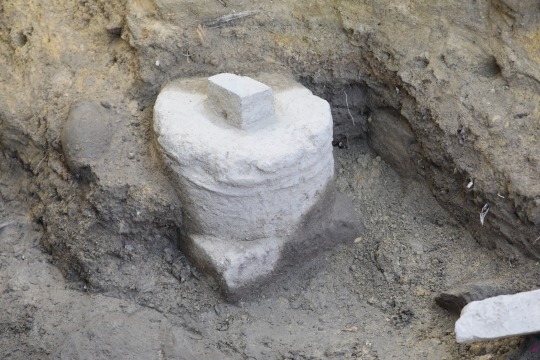

#Carthage#Five Rare 2300-Year-Old Gold Coins Discovered at Ancient Carthage#The Tophet of Carthage#ancient grave#ancient tomb#ancient temple#gold#gold coins#collectable coins#treasure#ancient artifacts#archeology#archeolgst#history#history news#ancient history#ancient culture#ancient civilizations#Carthaginian Empire
38 notes
·
View notes
Text
There Were Elephants Here Before

While crossing the Alps in 218 BC, the great Carthaginian general Hannibal Barca has stumbled upon the skull of a woolly mammoth half-buried in the snow. Given the difficulty his own animals have experienced in enduring the montane cold, he wonders how elephants could ever be native to these frigid heights deep in Europe.
This is of course a speculative scenario, but woolly mammoth remains have actually been found in the Alps on several occasions, so I think it’s theoretically possible for Hannibal or people in his army to have found some on their trek.
#hannibal barca#hannibal#ancient carthage#carthaginian#north african#african#ancient#black man#dark skin#elephant#african elephant#woolly mammoth#mammoth#fossil#alps#history#digital art#art
16 notes
·
View notes
Text

i made a spiky boi
now i just need to figure out the rest of his tattoos....
#Vanth#aka Mago#because i realized it doesn't make sense for him to have had a surname in his previous life#also a carthaginian inspired name feels appropriate#given his relationship with the imperium XD
13 notes
·
View notes
Text
just saw a post that started ‘ships hit better when’ and immediately assumed it was abt triremes ramming one another
#new shipping discourse is whether the large number of roman rams vs only two carthaginian rams found from the ships sunk in the battle of#the egadi islands despite it being the romans who won the battle is evidence for carthage fighting w captured roman ships#beeps
195 notes
·
View notes
Text

Hannibal recognises the head of his brother Hasdrubal
by Giovanni Battista Tiepolo
#hannibal barca#hasdrubal barca#art#giovanni battista tiepolo#carthaginians#romans#carthaginian#roman#ancient rome#rome#italy#carthage#history#antiquity#second punic war#punic wars#italia#europe#meditteranean#hannibal#hasdrubal
365 notes
·
View notes
Photo
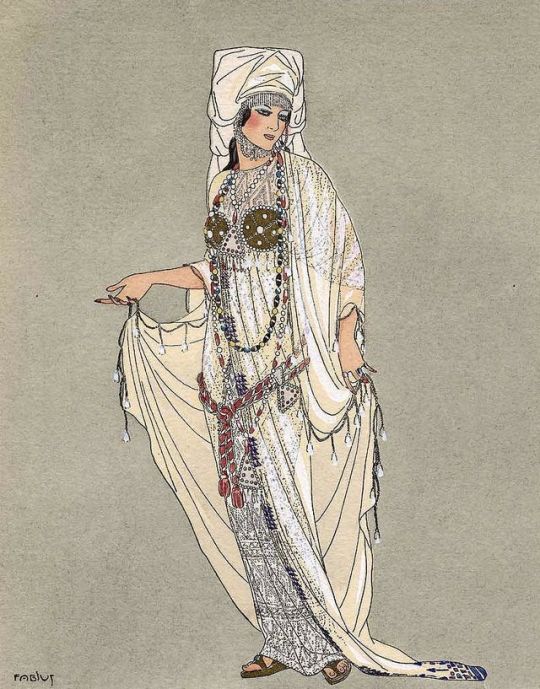
Alberto Fabio Lorenzi, Sophonisbe (Sophonisba). Projet de costume de Worth pour Madame Bartet (Costume design for Madame Bartet in the role of Sophonisba by House of Worth), La Gazette du Bon Ton, 1913.
This project of House of Worth was executed for Mrs. Bartet in the role of Sophonisba. It consists of a large shirt in oriental tulle with a lamé of silver, half covered with an embroidered Indian veil, and a cream coat in an Indian transparent veil. The cabochons are of gold and fine pearls and the belt is a double necklace of orient.
Sophonisba (fl. 203 BC) was a Carthaginian noblewoman who lived during the Second Punic War, and the daughter of Hasdrubal Gisco Gisgonis (son of Gisco). In an act that became legendary, Sophonisba poisoned herself rather than be humiliated in a Roman triumph. (x)
#alberto fabio lorenzi#1913#house of worth#sophonisba#sophonisbe#sophoniba#costume#costume illustration#1910s costumes#1910s costume illustration#noblewoman#carthaginian#second punic war#poisoned#Madame Bartet#Anne Régina Badet#Mme Bartet#la belle epoque#belle epoque#Carthaginian costume#ancient carthage#carthage#Carthagian#carthaginian empire#charles frederick worth#lorenzi#fabius lorenzi
29 notes
·
View notes
Text
Carthage rose from humble beginnings to become one of Rome’s greatest rivals. Sadly, today it is mainly remembered in the context of its dramatic fall and ultimate defeat.
24 notes
·
View notes